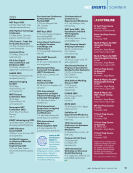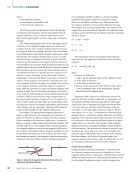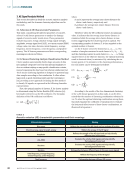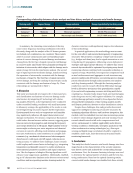technology in monitoring crack and damage characteristics of
reinforced concrete beams. Ren et al. [13] used the Brazilian
disk splitting test and AE technology to study the damage
characteristics of steel fiber-reinforced concrete with different
steel fiber contents, analyzing the trend of AE signal feature
parameters throughout the entire failure process. The results
showed that AE characteristic parameters are closely related
to the internal damage of concrete specimens and exhibit dif-
ferent AE signal characteristics at different stages of failure.
Wang et al. (2020) [14] used standard multifractal methods
and multifractal detrended fluctuation analysis (MF-DFA) to
analyze the multifractal characteristics of AE hit rates, reveal-
ing the relationship between AE signal features and damage
evolution patterns of concrete with varying steel fiber contents
under uniaxial tension. Shen et al. [15] monitored the com-
pressive failure process of concrete encased steel tube concrete
columns (CE-CFST) using AE technology, revealing six stages
of damage evolution and clarifying the dynamic relationship
between crack types and damage intensity. This provided an
effective method for monitoring structural damage processes
and early warning of failure. Chang et al. [16] used AE and DIC
techniques to monitor the damage process of concrete beams
repaired with BFRP, discovering different types of cracks and
interface debonding, which helped the repaired beams achieve
ductile bending behavior.
Cluster analysis technology is an intelligent analytical tech-
nique capable of effectively extracting features from massive
datasets and conducting unsupervised classification based on
inherent characteristics within the data [17, 18]. By integrat-
ing clustering analysis techniques, complex AE signals can be
self-organized and classified for feature extraction, enabling
an in-depth analysis of damage characteristics and mecha-
nisms. This approach overcomes the limitations of traditional
methods in handling multi-dimensional data, providing an
efficient, cost-effective, and practical solution for damage
assessment in materials such as concrete. Lin et al. [19] applied
the k-means clustering algorithm to the analysis of concrete
CT images, enabling precise extraction of meso-scale damage
information and revealing damage evolution patterns. The
results demonstrated that this method has significant advan-
tages in damage partitioning and evolutionary analysis, effec-
tively quantifying the degree of concrete damage and elu-
cidating its mechanisms. W. Li et al. [20] performed cluster
analysis on preprocessed data and, based on the load curve of
the specimens, ultimately determined various damage mecha-
nisms. Wei et al. [21] used clustering algorithms to process AE
signal data, revealing how temperature accelerates the fatigue
damage process in asphalt mixtures, where tensile cracks
dominate the damage mode evolution. They quantitatively
characterized the role of temperature in promoting microcrack
initiation, propagation, and macroscopic fracture. Yu et al. [22]
collected AE signals from polymer concrete during three-point
bending experiments and employed unsupervised pattern
recognition and deep-learning image classification methods.
Through processes such as feature extraction, they accurately
identified damage mechanisms, providing reliable support for
damage monitoring in polymer concrete.
This study employs k-means cluster analysis to classify
the AE signals of concrete under uniaxial tension to study the
characteristics of concrete tensile damage and failure. The
optimal number of clusters was determined using the Davies-
Bouldin (DB) Index [23], and effective cluster combinations
were selected. The validity of these combinations was verified
using a correlation analysis method of AE feature parame-
ters, and the optimal clustering results were identified using
the coefficient of variation, an indicator of data dispersion. By
integrating the damage stages delineated by temporal analysis,
the classification of concrete damage levels was achieved.
Analyzing the AE feature parameters hidden behind the clus-
tering results provided an effective interpretation of the mech-
anisms of concrete tensile damage at various damage levels.
This research strengthens our theoretical understanding of the
damage characteristics of concrete and holds certain practical
value in engineering. Through accurate damage classification
and mechanism analysis, it can provide more accurate data
support for structural health monitoring and effectively guide
structural maintenance and repair work.
2. Experimental Design Plan
In this section, the preparation process of the specimen, the
loading equipment, and the acoustic emission signal acquisi-
tion system will be described in detail.
2.1. Preparation of Test Pieces
This experiment utilized ordinary Portland cement type 425,
river sand with a fineness modulus of 2.1, and coarse aggre-
gates with a particle size of less than 30 mm. The mixture was
prepared with a ratio of cement to sand to gravel to water of
1:2:3.8:0.5 and poured into steel molds measuring 300 mm ×
300 mm × 1100 mm. After compaction by vibration, the spec-
imens were allowed to set and harden at room temperature
before demolding. To ensure uniformity, all concrete samples
underwent 28 days of water curing. Subsequently, three
cylindrical concrete specimens, each measuring mm ×
150 mm, were extracted using a core drilling machine and
placed under standard curing conditions. The specimens were
designated as C1, C2, and C3.
2.2. Loading Device and AE Acquisition Device
First, the specimens and the surfaces of the loading plates of
the testing machine are wiped clean. Then, the specimens
are placed on the lower loading plate of the testing machine.
Before the test, the surface where the sensors will be placed
should be ground to ensure smoothness, and petroleum jelly
should be applied to guarantee the quality of the AE signals
collected. The sensors are fixed to the surface of the specimens
using rubber bands and petroleum jelly. Both the loading
and monitoring schemes are implemented to ensure the
integrity of the AE signals during the tensile damage process.
According to the system settings, the loading system will cease
ME
|
AXIALTENSION
42
M AT E R I A L S E V A L U AT I O N • M AY 2 0 2 5
reinforced concrete beams. Ren et al. [13] used the Brazilian
disk splitting test and AE technology to study the damage
characteristics of steel fiber-reinforced concrete with different
steel fiber contents, analyzing the trend of AE signal feature
parameters throughout the entire failure process. The results
showed that AE characteristic parameters are closely related
to the internal damage of concrete specimens and exhibit dif-
ferent AE signal characteristics at different stages of failure.
Wang et al. (2020) [14] used standard multifractal methods
and multifractal detrended fluctuation analysis (MF-DFA) to
analyze the multifractal characteristics of AE hit rates, reveal-
ing the relationship between AE signal features and damage
evolution patterns of concrete with varying steel fiber contents
under uniaxial tension. Shen et al. [15] monitored the com-
pressive failure process of concrete encased steel tube concrete
columns (CE-CFST) using AE technology, revealing six stages
of damage evolution and clarifying the dynamic relationship
between crack types and damage intensity. This provided an
effective method for monitoring structural damage processes
and early warning of failure. Chang et al. [16] used AE and DIC
techniques to monitor the damage process of concrete beams
repaired with BFRP, discovering different types of cracks and
interface debonding, which helped the repaired beams achieve
ductile bending behavior.
Cluster analysis technology is an intelligent analytical tech-
nique capable of effectively extracting features from massive
datasets and conducting unsupervised classification based on
inherent characteristics within the data [17, 18]. By integrat-
ing clustering analysis techniques, complex AE signals can be
self-organized and classified for feature extraction, enabling
an in-depth analysis of damage characteristics and mecha-
nisms. This approach overcomes the limitations of traditional
methods in handling multi-dimensional data, providing an
efficient, cost-effective, and practical solution for damage
assessment in materials such as concrete. Lin et al. [19] applied
the k-means clustering algorithm to the analysis of concrete
CT images, enabling precise extraction of meso-scale damage
information and revealing damage evolution patterns. The
results demonstrated that this method has significant advan-
tages in damage partitioning and evolutionary analysis, effec-
tively quantifying the degree of concrete damage and elu-
cidating its mechanisms. W. Li et al. [20] performed cluster
analysis on preprocessed data and, based on the load curve of
the specimens, ultimately determined various damage mecha-
nisms. Wei et al. [21] used clustering algorithms to process AE
signal data, revealing how temperature accelerates the fatigue
damage process in asphalt mixtures, where tensile cracks
dominate the damage mode evolution. They quantitatively
characterized the role of temperature in promoting microcrack
initiation, propagation, and macroscopic fracture. Yu et al. [22]
collected AE signals from polymer concrete during three-point
bending experiments and employed unsupervised pattern
recognition and deep-learning image classification methods.
Through processes such as feature extraction, they accurately
identified damage mechanisms, providing reliable support for
damage monitoring in polymer concrete.
This study employs k-means cluster analysis to classify
the AE signals of concrete under uniaxial tension to study the
characteristics of concrete tensile damage and failure. The
optimal number of clusters was determined using the Davies-
Bouldin (DB) Index [23], and effective cluster combinations
were selected. The validity of these combinations was verified
using a correlation analysis method of AE feature parame-
ters, and the optimal clustering results were identified using
the coefficient of variation, an indicator of data dispersion. By
integrating the damage stages delineated by temporal analysis,
the classification of concrete damage levels was achieved.
Analyzing the AE feature parameters hidden behind the clus-
tering results provided an effective interpretation of the mech-
anisms of concrete tensile damage at various damage levels.
This research strengthens our theoretical understanding of the
damage characteristics of concrete and holds certain practical
value in engineering. Through accurate damage classification
and mechanism analysis, it can provide more accurate data
support for structural health monitoring and effectively guide
structural maintenance and repair work.
2. Experimental Design Plan
In this section, the preparation process of the specimen, the
loading equipment, and the acoustic emission signal acquisi-
tion system will be described in detail.
2.1. Preparation of Test Pieces
This experiment utilized ordinary Portland cement type 425,
river sand with a fineness modulus of 2.1, and coarse aggre-
gates with a particle size of less than 30 mm. The mixture was
prepared with a ratio of cement to sand to gravel to water of
1:2:3.8:0.5 and poured into steel molds measuring 300 mm ×
300 mm × 1100 mm. After compaction by vibration, the spec-
imens were allowed to set and harden at room temperature
before demolding. To ensure uniformity, all concrete samples
underwent 28 days of water curing. Subsequently, three
cylindrical concrete specimens, each measuring mm ×
150 mm, were extracted using a core drilling machine and
placed under standard curing conditions. The specimens were
designated as C1, C2, and C3.
2.2. Loading Device and AE Acquisition Device
First, the specimens and the surfaces of the loading plates of
the testing machine are wiped clean. Then, the specimens
are placed on the lower loading plate of the testing machine.
Before the test, the surface where the sensors will be placed
should be ground to ensure smoothness, and petroleum jelly
should be applied to guarantee the quality of the AE signals
collected. The sensors are fixed to the surface of the specimens
using rubber bands and petroleum jelly. Both the loading
and monitoring schemes are implemented to ensure the
integrity of the AE signals during the tensile damage process.
According to the system settings, the loading system will cease
ME
|
AXIALTENSION
42
M AT E R I A L S E V A L U AT I O N • M AY 2 0 2 5













































































